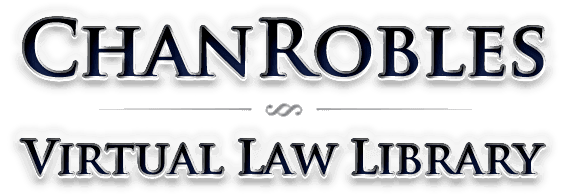§ 701. — Game and wild birds; preservation.
[Laws in effect as of January 24, 2002]
[Document not affected by Public Laws enacted between
January 24, 2002 and December 19, 2002]
[CITE: 16USC701]
TITLE 16--CONSERVATION
CHAPTER 7--PROTECTION OF MIGRATORY GAME AND INSECTIVOROUS BIRDS
SUBCHAPTER I--GENERALLY
Sec. 701. Game and wild birds; preservation
The duties and powers of the Department of the Interior include the
preservation, distribution, introduction, and restoration of game birds
and other wild birds. The Secretary of the Interior is authorized to
adopt such measures as may be necessary to carry out the purposes of
this Act, and to purchase such game birds and other wild birds as may be
required therefor, subject, however, to the laws of the various States
and Territories. The object and purpose of this Act is to aid in the
restoration of such birds in those parts of the United States adapted
thereto where the same have become scarce or extinct, and also to
regulate the introduction of American or foreign birds or animals in
localities where they have not heretofore existed.
The Secretary of the Interior shall from time to time collect and
publish useful information as to the propagation, uses, and preservation
of such birds.
And the Secretary of the Interior shall make and publish all needful
rules and regulations for carrying out the purposes of this Act, and
shall expend for said purposes such sums as Congress may appropriate
therefor.
(May 25, 1900, ch. 553, Sec. 1, 31 Stat. 187; 1939 Reorg. Plan No. II,
Sec. 4(f), eff. July 1, 1939, 4 F.R. 2731, 53 Stat. 1433.)
References in Text
This Act, referred to in text, is act May 25, 1900, section 1 of
which is classified to this section. Sections 2 to 4 of the Act were
repealed and restated by sections 241 to 244 of the Criminal Code of
1909 (approved Mar. 4, 1909, ch. 321) which were classified to sections
391 to 394 of former Title 18. Such sections were subsequently repealed
and reenacted as sections 42 to 44 of Title 18, Crimes and Criminal
Procedure. Section 5 of the Act which was classified to section 667e of
this title was repealed by Pub. L. 97-79, Sec. 9(b)(2), Nov. 16, 1981,
95 Stat. 1079.
Transfer of Functions
Reorg. Plan No. II of 1939, set out in the Appendix to Title 5,
Government Organization and Employees, transferred functions of
Secretary of Agriculture relating to conservation of wildlife, game, and
migratory birds to Secretary of the Interior.
Ex. Ord. No. 13186. Responsibilities of Federal Agencies To Protect
Migratory Birds
Ex. Ord. No. 13186, Jan. 10, 2001, 66 F.R. 3853, provided:
By the authority vested in me as President by the Constitution and
the laws of the United States of America, and in furtherance of the
purposes of the migratory bird conventions, the Migratory Bird Treaty
Act (16 U.S.C. 703-711), the Bald and Golden Eagle Protection Acts (16
U.S.C. 668-668d), the Fish and Wildlife Coordination Act (16 U.S.C. 661-
666c), the Endangered Species Act of 1973 (16 U.S.C. 1531-1544), the
National Environmental Policy Act of 1969 (42 U.S.C. 4321-4347), and
other pertinent statutes, it is hereby ordered as follows:
Section 1. Policy. Migratory birds are of great ecological and
economic value to this country and to other countries. They contribute
to biological diversity and bring tremendous enjoyment to millions of
Americans who study, watch, feed, or hunt these birds throughout the
United States and other countries. The United States has recognized the
critical importance of this shared resource by ratifying international,
bilateral conventions for the conservation of migratory birds. Such
conventions include the Convention for the Protection of Migratory Birds
with Great Britain on behalf of Canada 1916, the Convention for the
Protection of Migratory Birds and Game Mammals-Mexico 1936, the
Convention for the Protection of Birds and Their Environment-Japan 1972,
and the Convention for the Conservation of Migratory Birds and Their
Environment-Union of Soviet Socialist Republics 1978.
These migratory bird conventions impose substantive obligations on
the United States for the conservation of migratory birds and their
habitats, and through the Migratory Bird Treaty Act (Act), the United
States has implemented these migratory bird conventions with respect to
the United States. This Executive Order directs executive departments
and agencies to take certain actions to further implement the Act.
Sec. 2. Definitions. For purposes of this order:
(a) ``Take'' means take as defined in 50 C.F.R. 10.12, and includes
both ``intentional'' and ``unintentional'' take.
(b) ``Intentional take'' means take that is the purpose of the
activity in question.
(c) ``Unintentional take'' means take that results from, but is not
the purpose of, the activity in question.
(d) ``Migratory bird'' means any bird listed in 50 C.F.R. 10.13.
(e) ``Migratory bird resources'' means migratory birds and the
habitats upon which they depend.
(f) ``Migratory bird convention'' means, collectively, the bilateral
conventions (with Great Britain/Canada, Mexico, Japan, and Russia) for
the conservation of migratory bird resources.
(g) ``Federal agency'' means an executive department or agency, but
does not include independent establishments as defined by 5 U.S.C. 104.
(h) ``Action'' means a program, activity, project, official policy
(such as a rule or regulation), or formal plan directly carried out by a
Federal agency. Each Federal agency will further define what the term
``action'' means with respect to its own authorities and what programs
should be included in the agency-specific Memoranda of Understanding
required by this order. Actions delegated to or assumed by nonfederal
entities, or carried out by nonfederal entities with Federal assistance,
are not subject to this order. Such actions, however, continue to be
subject to the Migratory Bird Treaty Act.
(i) ``Species of concern'' refers to those species listed in the
periodic report ``Migratory Nongame Birds of Management Concern in the
United States,'' priority migratory bird species as documented by
established plans (such as Bird Conservation Regions in the North
American Bird Conservation Initiative or Partners in Flight
physiographic areas), and those species listed in 50 C.F.R. 17.11.
Sec. 3. Federal Agency Responsibilities. (a) Each Federal agency
taking actions that have, or are likely to have, a measurable negative
effect on migratory bird populations is directed to develop and
implement, within 2 years, a Memorandum of Understanding (MOU) with the
Fish and Wildlife Service (Service) that shall promote the conservation
of migratory bird populations.
(b) In coordination with affected Federal agencies, the Service
shall develop a schedule for completion of the MOUs within 180 days of
the date of this order. The schedule shall give priority to completing
the MOUs with agencies having the most substantive impacts on migratory
birds.
(c) Each MOU shall establish protocols for implementation of the MOU
and for reporting accomplishments. These protocols may be incorporated
into existing actions; however, the MOU shall recognize that the agency
may not be able to implement some elements of the MOU until such time as
the agency has successfully included them in each agency's formal
planning processes (such as revision of agency land management plans,
land use compatibility guidelines, integrated resource management plans,
and fishery management plans), including public participation and NEPA
analysis, as appropriate. This order and the MOUs to be developed by the
agencies are intended to be implemented when new actions or renewal of
contracts, permits, delegations, or other third party agreements are
initiated as well as during the initiation of new, or revisions to, land
management plans.
(d) Each MOU shall include an elevation process to resolve any
dispute between the signatory agencies regarding a particular practice
or activity.
(e) Pursuant to its MOU, each agency shall, to the extent permitted
by law and subject to the availability of appropriations and within
Administration budgetary limits, and in harmony with agency missions:
(1) support the conservation intent of the migratory bird
conventions by integrating bird conservation principles, measures, and
practices into agency activities and by avoiding or minimizing, to the
extent practicable, adverse impacts on migratory bird resources when
conducting agency actions;
(2) restore and enhance the habitat of migratory birds, as
practicable;
(3) prevent or abate the pollution or detrimental alteration of the
environment for the benefit of migratory birds, as practicable;
(4) design migratory bird habitat and population conservation
principles, measures, and practices, into agency plans and planning
processes (natural resource, land management, and environmental quality
planning, including, but not limited to, forest and rangeland planning,
coastal management planning, watershed planning, etc.) as practicable,
and coordinate with other agencies and nonfederal partners in planning
efforts;
(5) within established authorities and in conjunction with the
adoption, amendment, or revision of agency management plans and
guidance, ensure that agency plans and actions promote programs and
recommendations of comprehensive migratory bird planning efforts such as
Partners-in-Flight, U.S. National Shorebird Plan, North American
Waterfowl Management Plan, North American Colonial Waterbird Plan, and
other planning efforts, as well as guidance from other sources,
including the Food and Agricultural Organization's International Plan of
Action for Reducing Incidental Catch of Seabirds in Longline Fisheries;
(6) ensure that environmental analyses of Federal actions required
by the NEPA or other established environmental review processes evaluate
the effects of actions and agency plans on migratory birds, with
emphasis on species of concern;
(7) provide notice to the Service in advance of conducting an action
that is intended to take migratory birds, or annually report to the
Service on the number of individuals of each species of migratory birds
intentionally taken during the conduct of any agency action, including
but not limited to banding or marking, scientific collecting, taxidermy,
and depredation control;
(8) minimize the intentional take of species of concern by: (i)
delineating standards and procedures for such take; and (ii) developing
procedures for the review and evaluation of take actions. With respect
to intentional take, the MOU shall be consistent with the appropriate
sections of 50 C.F.R. parts 10, 21, and 22;
(9) identify where unintentional take reasonably attributable to
agency actions is having, or is likely to have, a measurable negative
effect on migratory bird populations, focusing first on species of
concern, priority habitats, and key risk factors. With respect to those
actions so identified, the agency shall develop and use principles,
standards, and practices that will lessen the amount of unintentional
take, developing any such conservation efforts in cooperation with the
Service. These principles, standards, and practices shall be regularly
evaluated and revised to ensure that they are effective in lessening the
detrimental effect of agency actions on migratory bird populations. The
agency also shall inventory and monitor bird habitat and populations
within the agency's capabilities and authorities to the extent feasible
to facilitate decisions about the need for, and effectiveness of,
conservation efforts;
(10) within the scope of its statutorily-designated authorities,
control the import, export, and establishment in the wild of live exotic
animals and plants that may be harmful to migratory bird resources;
(11) promote research and information exchange related to the
conservation of migratory bird resources, including coordinated
inventorying and monitoring and the collection and assessment of
information on environmental contaminants and other physical or
biological stressors having potential relevance to migratory bird
conservation. Where such information is collected in the course of
agency actions or supported through Federal financial assistance,
reasonable efforts shall be made to share such information with the
Service, the Biological Resources Division of the U.S. Geological
Survey, and other appropriate repositories of such data (e.g, the
Cornell Laboratory of Ornithology);
(12) provide training and information to appropriate employees on
methods and means of avoiding or minimizing the take of migratory birds
and conserving and restoring migratory bird habitat;
(13) promote migratory bird conservation in international activities
and with other countries and international partners, in consultation
with the Department of State, as appropriate or relevant to the agency's
authorities;
(14) recognize and promote economic and recreational values of
birds, as appropriate; and
(15) develop partnerships with non-Federal entities to further bird
conservation.
(f) Notwithstanding the requirement to finalize an MOU within 2
years, each agency is encouraged to immediately begin implementing the
conservation measures set forth above in subparagraphs (1) through (15)
of this section, as appropriate and practicable.
(g) Each agency shall advise the public of the availability of its
MOU through a notice published in the Federal Register.
Sec. 4. Council for the Conservation of Migratory Birds. (a) The
Secretary of Interior shall establish an interagency Council for the
Conservation of Migratory Birds (Council) to oversee the implementation
of this order. The Council's duties shall include the following: (1)
sharing the latest resource information to assist in the conservation
and management of migratory birds; (2) developing an annual report of
accomplishments and recommendations related to this order; (3) fostering
partnerships to further the goals of this order; and (4) selecting an
annual recipient of a Presidential Migratory Bird Federal Stewardship
Award for contributions to the protection of migratory birds.
(b) The Council shall include representation, at the bureau
director/administrator level, from the Departments of the Interior,
State, Commerce, Agriculture, Transportation, Energy, Defense, and the
Environmental Protection Agency and from such other agencies as
appropriate.
Sec. 5. Application and Judicial Review. (a) This order and the MOU
to be developed by the agencies do not require changes to current
contracts, permits, or other third party agreements.
(b) This order is intended only to improve the internal management
of the executive branch and does not create any right or benefit,
substantive or procedural, separately enforceable at law or equity by a
party against the United States, its agencies or instrumentalities, its
officers or employees, or any other person.
William J. Clinton.


